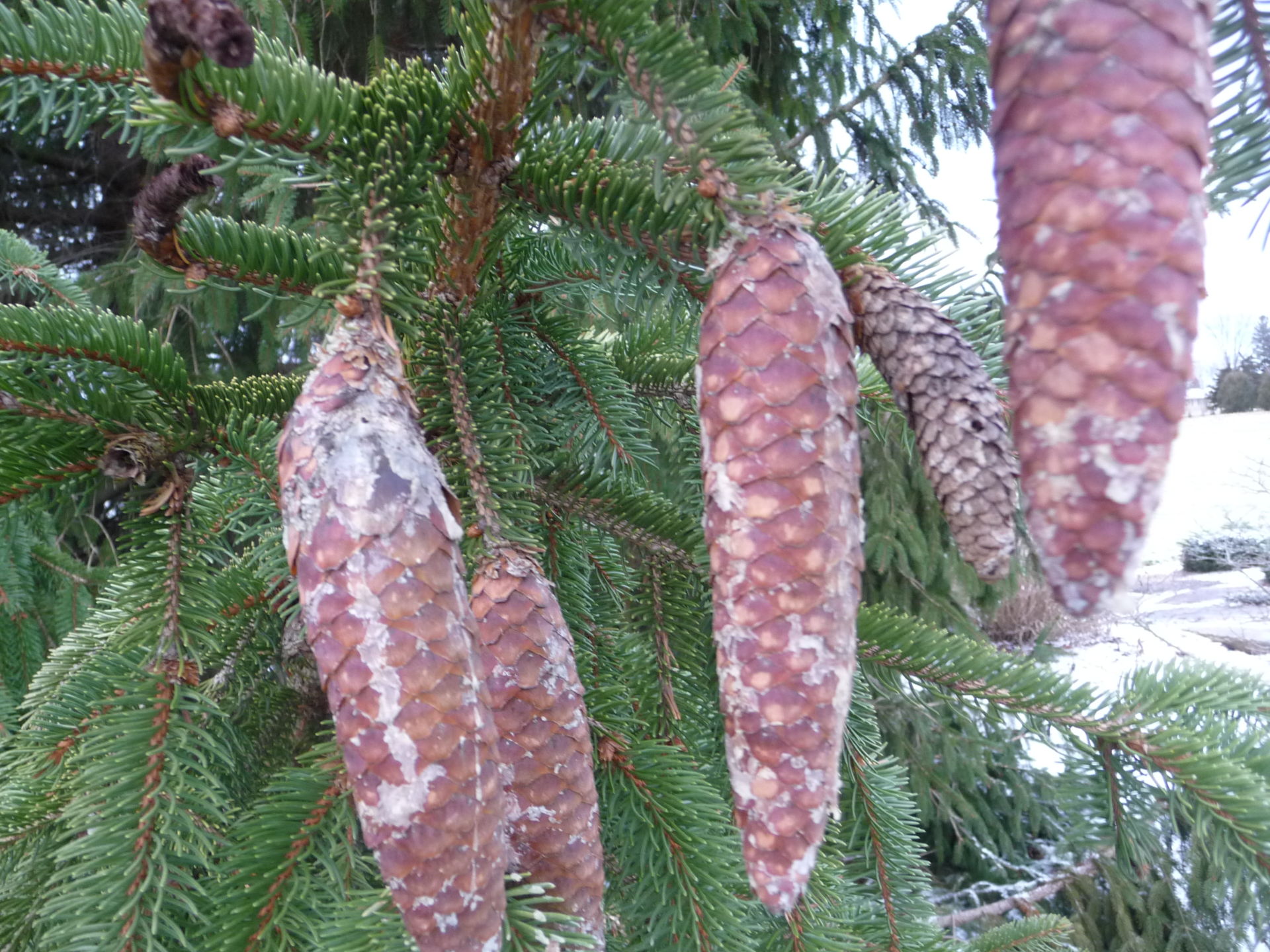Conifers
Garden Clippings for December 8, 2018
Our corner of the world would be bleak if it were not for conifers. In winter, conifers become the symbol of life while the rest of the forest remains dormant or asleep.
Conifers, or evergreens break the monotony of a leafless winter forest. Conifers provide wind protection and are a source of shelter for insects, birds and small animals.
To a non-gardener all conifers might look the same. Quite the contrary. There’s a world of differences between spruce, cedars, pine and fir and within each conifer there are seemingly endless varieties and cultivars.
Without a doubt, White Pine, Ontario’s official provincial tree is our most treasured conifer. White Pine is hardy, highly adaptable, fast growing and has been eastern Canada’s most valuable tree for commercial purposes.
White Pine is noteworthy for its straight main stem and picturesque branching habit, giving it a wind-swept look. It is no small wonder that White pines are a favorite for artists. In home landscapes, White Pine is appreciated for its soft needles and rapid growth. They provide privacy, wind protection and are a wonderful background for a colourful perennial garden.
Scotch Pine, a slower and smaller growing relative of White Pine, has grey-blueish evergreen colour with needles about 2 inches long, about half the length of White Pine. Needles are 2 per cluster while White Pine has 5 per cluster. Scots Pine, not a Canadian Native, has been a favorite for Christmas tree production.
Austrian Pine is a chunky evergreen with rugged dark green foliage. Austrian Pine’s claim to fame is that it will grow anywhere, including busy cities with poor soil and questionable air pollution. They will also tolerate salt spray along major highways.
White Spruce, like White Pine, is native to Canada but likely wouldn’t be growing in Southwestern Ontario were it not for the fact that it has been introduced to the area. White Spruce has a dense growth habit, growing a little smaller and slower than White Pine, making it better suited for small properties.
Norway Spruce has been introduced to Canada from Europe. Norway Spruce becomes stately, eventually growing over 100 feet tall. In time, its limbs droop downward, giving Norway Spruce a graceful form. If you see an evergreen lined rural laneway, you can bet the trees are Norway Spruce.
Colorado Spruce has gained popularity because it is a stately tree with blue needle colour. it has often been planted on its own in the centre of a front yard. Colorado Spruce, like Austrian Pine can withstand living in adverse city conditions as well as along busy highways.
White Cedar, another native selection with widespread growth throughout Eastern Canada is treasured as a host for many birds. White Cedar grows smaller than most conifers, making it a good choice for hedges and windrows. Black Cedar, a popular related spin-off, has darker green foliage and a more compact growth habit.
Other Ontario conifers less abundant than those listed above include Canadian Hemlock, Douglas, Silver and Balsam Firs, Jack and Red Pine and Eastern Red Cedar.


